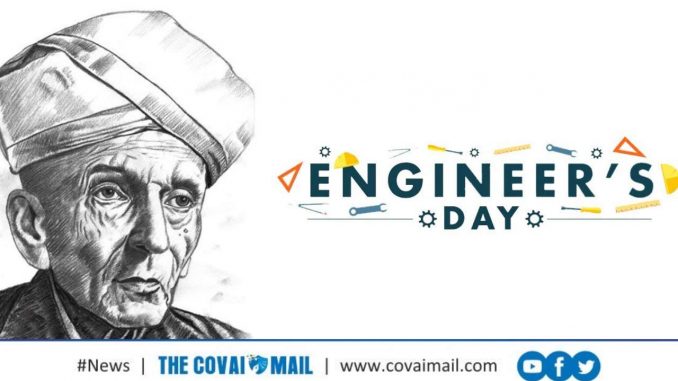
Not all men get the opportunity to live a hundred years. Sir. M.Visvesvaraya could not have possibly known that he will live 101 years but he lived it so well and worthy that even today he is fondly remembered as one of the greatest engineers India has ever seen. To Visvesvaraya the best gift his family gave was school education. In 1800s quality education for all was not a possibility but a privilege. When his father died, Visvesvaraya was just 15 years old and the only thing that saved him and his family from the pangs of poverty was his education.

He earned his livelihood by offering tuition to children, went to college and completed Engineering with distinction. He started working for Bombay Government’s PW Department.
As an Engineer he developed Block System that would prevent the wasteful overflow of water in dams, he provided solutions to safeguard Hyderabad from floods, invented automatic flood gates for reservoirs and dams, made pioneering work in water supply and drainage system, played phenomenal role in the construction of Krishnaraja Sagara Dam and the list could go on.
There were so many challenges in the country that needed civil engineering solutions, and Visvesvaraya used his intellect to make inventions and he put an end to many crisis.
To honor his contributions to the country, he was made a Knight Commander of the British Indian Empire (KCIE) by King George V and the Indian Government conferred the highest civilian award Bharat Ratna on him. His birthday September 15th, is celebrated as National Engineer’s Day in India.
He is a fine example that the future of our country is in the hands of innovators. For this year’s Engineer’s Day, The Covai Mail spoke with some of the amazing young engineering students from various Engineering & Polytechnic Colleges in Coimbatore about their inventions.
Sheet Metal Forming without Die – PSG Tech
Guided by: Prof.Pratheesh Kumar. Team: Manoj Devaraj, Siva Shankaran, Harsha and Niraj Rao
Sheet metal forming is a common process that is sought for making shaped components, from soda cans to automotive car bodies. In R&D processes, prototype manufacturing is an important step in product development.
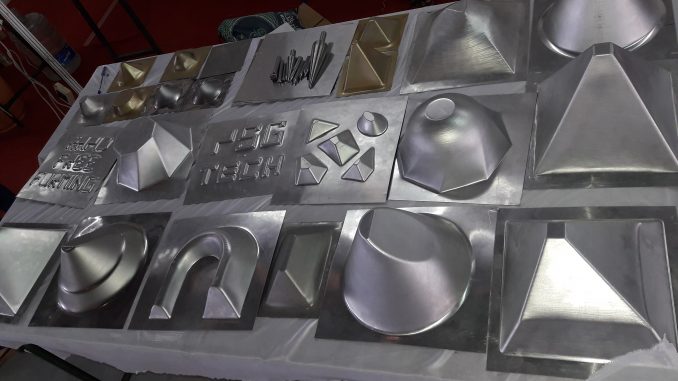
Traditional Sheet Forming practices that depends on die is time-consuming and costly for the small scale productions and while making prototypes. Conventional methods like Punch & Die and Spinning process in giving a form to metal sheets’ final shape is not that light on wallet.
The innovative minds behind this concept – Sheet Metal Forming without Die- say that small level projects involving the making of Metal Sheets and prototypes can benefit greatly from this process, and also reduce their expense and time.
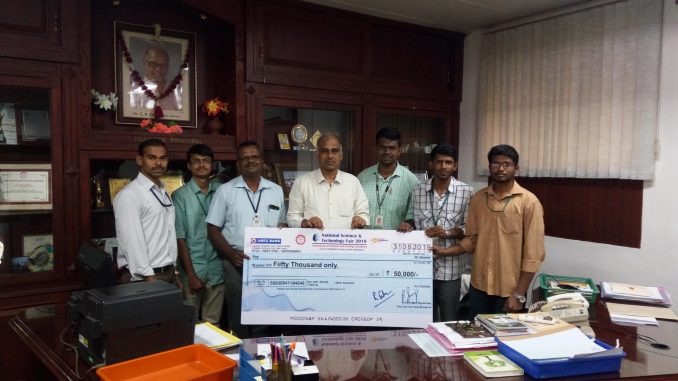
This invention won the first prize in the CODISSIA Science-Tech Fair 2019. It must be mentioned that more than 1000 projects were submitted for this particular event.
Inductive Charging of E-Vehicle – PSG Polytechnic College
Guided by Prof.Arul Kumar. Team: V.Shakthi Priyan, M.Arun Prasanth and M.Jayasathya.
Shakthi Priyan and a team of Automobile Engineers have developed a method that enables charging of the Electric vehicle wirelessly. He says that when an easier charging option is given for users of e-vehicle, not only does it make them appear cool but reduces time and increases efficiency.
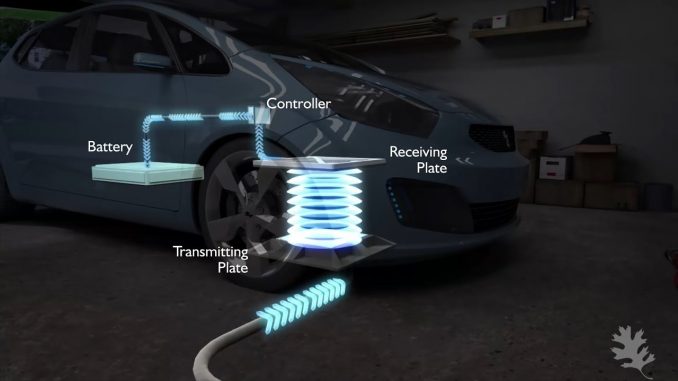
In his project, there are two circuits- one on the ground and the other is kept inside the car. So when an alternate power source charges the coil in power-outlet kept in the public charging stations, it create Electro-Magnetic Frequency (EMF). When the second coil that is present in the car comes near this EMF emitted from the coil in the ground, it also gets electrified and in turn charges the battery in the car.
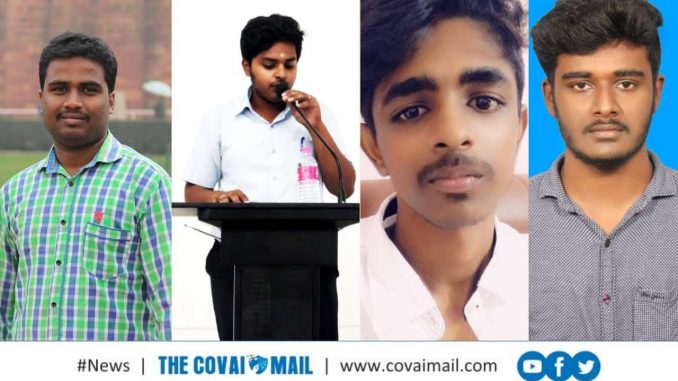
Shakthi Priyan says that this concept consumes less time and make the operation easy for the user. He credits his guide Prof. Arul Kumar and his team for their valuable inputs and says that his Principal and Management encouraged them in bringing this project up.
Nutrient Recovery from Cow Urine for sustainable agriculture – PSG iTech
Guided by Dr. M. Devasena. Team: Rosaline, R.Raghav, R.Suchitra and M.Satheeswaran.
Majority of the poor are subsistence farmers in the rural areas where roughly 70% of the developing world’s 1.4 billion extremely poor people live. Increasingly, rural farmers are women taking on farming responsibilities left by men as they migrate to urban areas for jobs. This and the rise of commercial agriculture have continued the feminization of agriculture across regions.
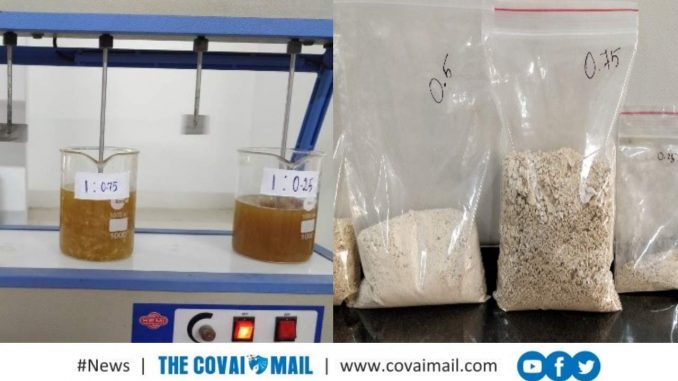
Indeed, demand for organic food and products has steadily risen as environmental and health safety concerns increasingly influence consumer purchases. Organic agriculture creates opportunities for women. In addition, it offers economic opportunities (low costs); promotes health (no synthetic chemicals); encourages biodiversity and traditional knowledge (farming practices); and ensures equitable work standards. Moreover, organic production of local or indigenous varieties is harmonious with traditional farming practices, and more resilient to pests, diseases, and to climate extreme; hence, organic agriculture is an effective climate change adaptation strategy without requiring extensive public support. Struvite (MAP) production from cow urine is a self-sustainable activity especially for women and marginal farmers.
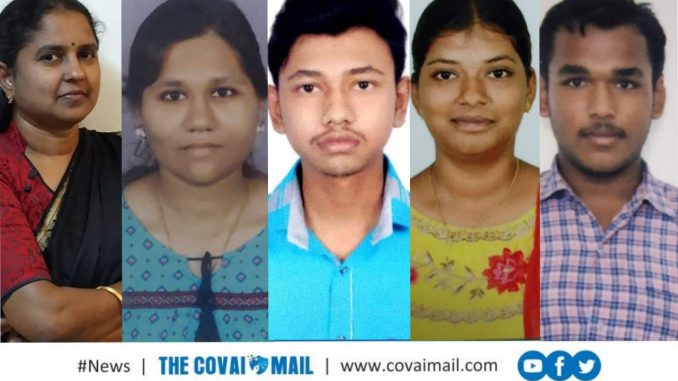
The project is aimed for production of struvite (Organic fertilizer) from cow urine. Struvite which is rich in phosphorous is obtained by an innovative process and later can be dried, powdered and be used as an organic fertilizer to the plants. Struvite obtained from cow urine is odour free, can be handled with bare hands and free of trace pollutants.
Based on the demand, the production can be scaled up by setting up an integrated mass storage and production units in villages, goshalas and temples. With adoption of this simple technology, a farmer could achieve the break up cost within 6 months of start of production. This would improve the standard of living and household income of farmers. The simple and novel technique of Struvite production adds on to the concept of sustainable agricultural practices as well as reduction in usage of non-renewable resources.
Warm- Bed Mattresses – Dr.NGP IT
Guided by : Dr. C.Ramkumar. Team: S.Vihaasini,R.Vigneshwar, M.Bharath, K.Poovarasan, M.Bhakiyalakshmi and A.Sree Vishnu.
One of the team-lead behind this innovative concept Vihaasini, a third year Bio-Medical Engineering student briefed that their soon to be prototype is designed to regulate the surface temperature of mattresses that are provided at the laying-area of scanning machines like MRI, CT and PET.
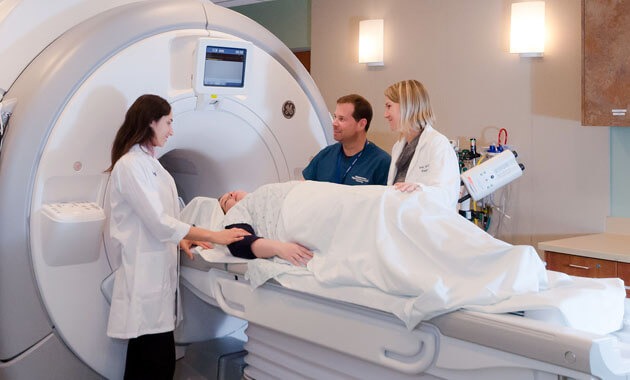
Vihaasini said “The area where the scan machines are kept should be air-conditioned for their proper functioning. Patients who are scanned cannot bear the cold for longer time, they could start shivering, develop unsteady metabolism and feel uncomfortable while they are laying on the bed for their physical examination. So what we have come with is a concept in which the mattress that can regulate the body temperature to provide warmth to the patient”.
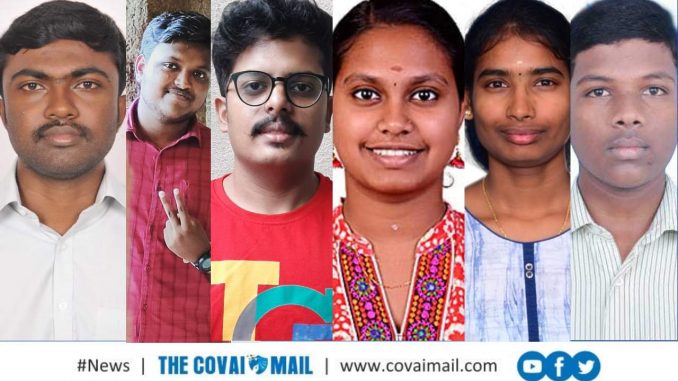
This idea has made it through the first round of the Smart India Hackathon’s Finals. The team is waiting for Round 2 results. “We came this far because of our college, our mentor and our team. Our parents understood our dreams and their support is the biggest in our lives”, she ended.
Object-Dropping UAV – HIET
Guided by Prof. V.Saravana Kumar. Team: Rooban Raj
While drones have become a valuable asset in photography and surveillance, a 4-member team from Hindusthan Institute of Engineering & Technology (HIET) has developed an object-dropping UAV that can be deployed at disaster affected areas to drop essential medicines and kits.
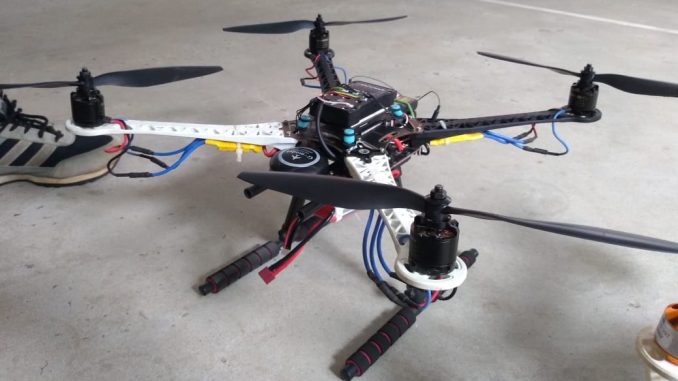
Rooban said “Since our drone is meant for delivering medicines, we have made the delivery mechanism to land at the area on its own (once it reaches the set-coordinates) and then return to the drone”. We have included automatic flying stability system so that the delivery is done smooth”.
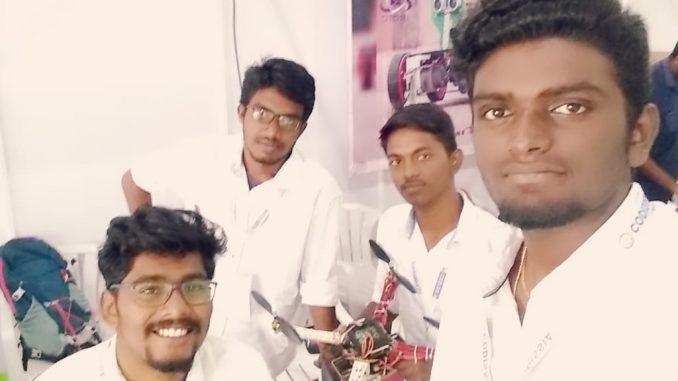
“Our college management provided great support in opening a UAV Club in the campus. The club helped us in developing not just our projects but also helped our juniors to realize their aspirations”
Independent Walker cum Gait Trainer – SREC
Guided by Prof Balamurugan and Surya Rajan Team: Anusha Sai Priya and Madhumitha
Anusha and Madhumitha are two Bio-Medical Engineering Students at Sri Ramakrishna Engineering College (SREC) who have made an invention in rehabilitation field. The duo have developed an Independent Walker cum Gait Trainer -a walking model for cerebral palsy children between ages 6 and 13.
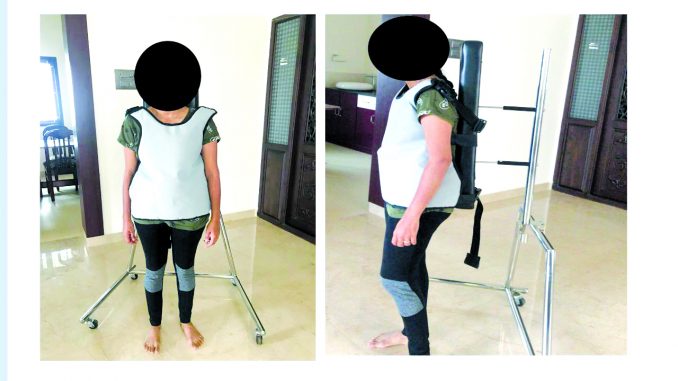
Gait Trainer are recommended for children or adults with physical disabilities. These trainers will have wheels that aid them to walk without other’s support and also give them confidence. So the invention in focus could certainly help the cerebral palsy children break the barriers.
Regarding this, one of the brains behind this invention Anusha said that when earlier intervention and support are given to Cerebral Palsy children, they stand a chance to improve their physical self and well-being “It is clinically proven that kids between the ages 6 and 13 have high potential to improve their flexibility.
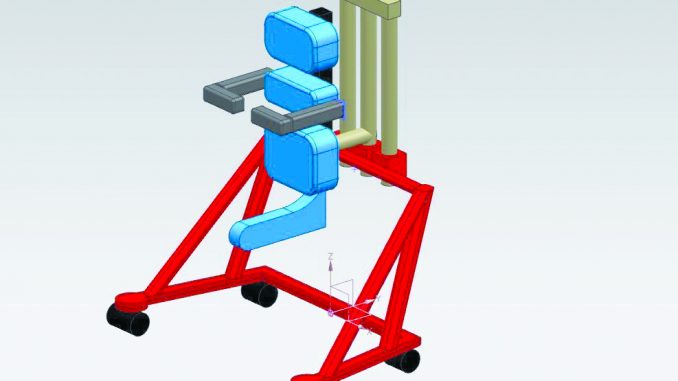
The model that the duo have made helps maintain posture of the children and it prevents spine deformity among other complications from developing. While conventional wheel-chairs don’t give options for physical therapy, this independent walker facilitates that; it could be customized to a specific individual’s requirements and help them maintain posture and improve their lower-body strength.
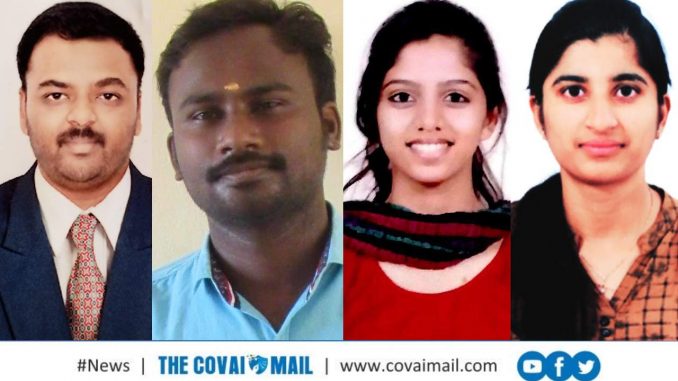
And most of all, other models that are anything like this, comes from a manufacturer in abroad, thus making it quite weight on the wallet but this one is a Make in India concept and could be afforded by people in need.
